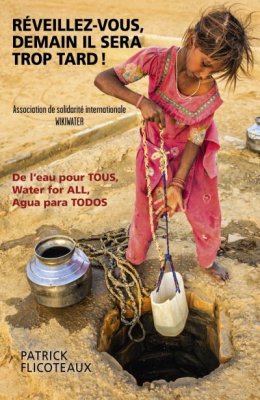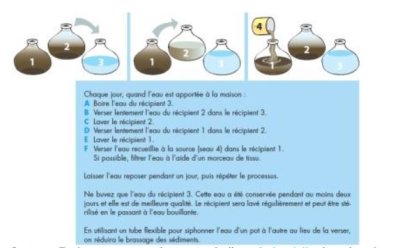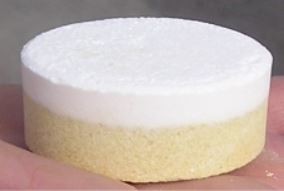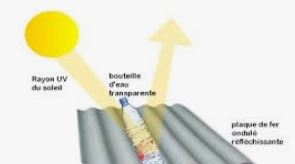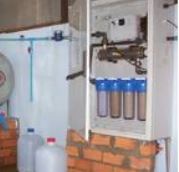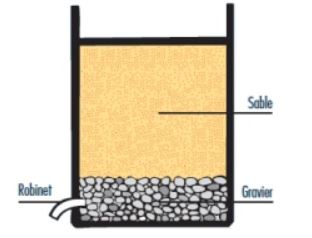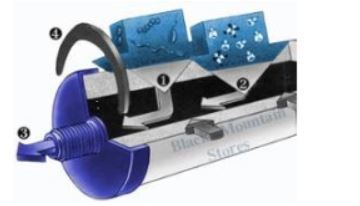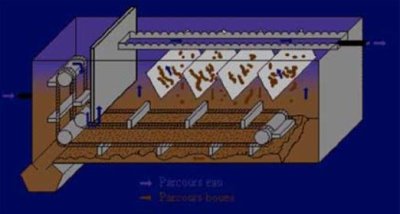1) What is involved ?
This involves using the seeds of a tropical tree, the Moringa oleifera in the water treatment process. The use of these seeds which are reduced to a powder beforehand makes it possible to substantially reduce the microorganism content in the treated water.
2) Who use or recommends this means and since when ?
The origin of the use of this plant, which is now grown in about thirty countries, was in India where is was moreover known more for its food and therapeutic virtues.
Several research institutes or organisations have taken interest more recently in its abilities to at least partially treat water and have perfected methods for use of which the effectiveness has been proven.
As such, the Institute of human settlements in Bandung (Indonesia) for several years has been successfully developing a treatment for 25 l of water at home via flocculation-decantation of 25 l using Moringa then filtering as well as a larger 200 l treatment unit with the use of Moringa then filtration on gravel, sand and charcoal
Likewise, a German-Burundi team has created a Moringa-based treatment plant with a capacity of 2.5m3/d serving 100 people. The water passes through it via simple gravity through a sand-removal basin, a decanter then a slow sand filter of the facility, with the Moringa-base flocculation solution being added continuously to the raw water.
3) Why ?
The Moringa oleifera grows in all types of soil and resists dry spells rather well.
The Moringa oleifera furthermore has a pharmacological and food interest, as the various constituents of the Moringa can play a major role in dietary and medicinal supplements ;
Indeed, the oil is rich in Vitamin C and iron, the roots are rich in antibiotics. A single leaf contains 220 mg/100g of vitamin C, amino acids and proteins (6.7%). Finally, the bark secretes an antidiarrheal, diuretic and febrifuge resin.
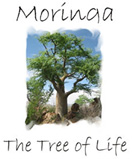 |
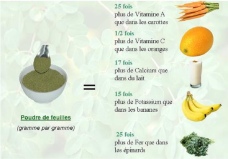 |
Source : Ministry of Health of Cambodia
|
The conclusions of M. L. Price (Echo 2000 project) concerning the nutritional qualities of the Moringa Oleifera were for example as follows :
NUTRITIONAL INTAKE FROM THE ORGANS OF M. OLEIFERA.
| RDA = Recommended Daily Allowance | Pods | Leaves |
Leaf powder (50g) |
|---|---|---|---|
| Moisture content (%) | 86.9 | 75 | 3.25 |
| Calories | 26 | 92 | 102.5 |
| Proteins (g) | 2.5 | 6.7 |
13.55 84% RDA in children |
| Lipids (g) | 0.1 | 1.7 | 1.15 |
| Carbohydrates | 3.7 | 13.4 | 19.1 |
| Vegetable fibres (g) | 4.8 | 0.9 | 8.6 |
| Ca (mg) | 30 | 440 |
1 250% RDA in children |
| Mg (g) | 24 | 24 |
184 122% RDA in children |
| Fe |
94% RDA in children 71% RDA in mothers |
||
| Vit. A (mg) | 0.11 | 6.8 |
8.15 143% RDA in children 271% RDA in mothers |
| Vit. B (mg) | 423 | 423 | - |
| Vit. C (mg) | 220 |
8.65 9% RDA in children 22 RDA in mothers |
4) Who is primarily concerned ?
It is especially the populations of tropical and sub-Saharan regions who are concerned. In fact, the Moringa oleifera only grows in these regions.
The process is inexpensive and is especially, but not exclusively, for family use or for a small community.
5) What does this process involve ? How is it used ?
Here are 2 examples of treatment protocols using Moringa oleifera seeds :
a) First example of a treatment protocol mentioned by PROPAGE (Emilie Chantrel and Armelle de Saint Sauveur)
The crushed seed mixture can be prepared from the seeds as well as pressed residue (cakes) obtained after extracting the oil from the seeds. The steps for purifying water that is cloudy in the context of a household are as follows for this protocol :
- The pods containing the seeds must mature by drying naturally on the tree until the turn a brown colour ;
- Once the pods have been collected, the seeds are removed, and are then husked (the wings and the hull around the kernel are removed) ; only the white or yellowish seeds that do not have any signs of softening, discolouration or excessive dryness are used.
- The seed (the kernel) is crushed and strained, with 0.8 mm holes or the equivalent. The traditional mortar and pestle technique, used to manufacture corn flour has been considered as acceptable for crushing the seeds of the Moringa oleifera.
- The fine powder obtained is mixed with clean water in order to form a paste. To treat 20 litres of water, produce a paste with 2 grams (2 tablespoons) of seed powder, which corresponds to about 20 crushed kernels (one per litre). If the water is not very cloudy, only one kernel per two litres can be used. Experience will show what the optimal dosage is.
- Dilute the paste in a clean glass of water (coming from a sealed bottle) and stir the solution vigorously for 5 minutes in order to cause a reaction in the powder’s chemical elements and favour the extraction of the flocculent. Stock solutions at 2% are the most effective, which means that the two grams of powder will have to be diluted in 100 grams of water ;
- Remove the insoluble material via filtration through a muslin cloth, a fine-mesh net or a piece of nylon or cotton fabric (with a pore diameter of 10µm). The filtered liquid, of milky appearance, is the stock solution. It must be shaken a little before it is used. In hot climates, this suspension cannot be stored and therefore has to be prepared every day. At 18-19°C, it can be kept for three days and if refrigerated, one week.
- Stir the water quickly while vigorously pouring on the stock solution. Quick stirring must be maintained for 30-60 seconds to 2 minutes.
- The slower and regular stirring (18-20rpm) is required for 5 to 15 minutes. To maintain regularity, a song with two-syllable words can be used, with a complete word corresponding to a full rotation.
- Allow the water to remain in the bucket, without moving it, for 1 to 2 hours ;
- When the solid material has settled to the bottom of the bucket, the clean water can then be recovered by checking turbidity with the unaided eye.
- Finally, boil or add a substance that will kill the bacteria, such as chlorine or bleach (one or two drops per litre) in order to make the water entirely healthy and without danger for human consumption.

Moringa seeds. PDF Photo Bank
b) Second example of a treatment protocol (indicated by Mr Sakho (NGO AGADA, Senegal)
This one is much simpler. Example for treating 20l of water :
- Husk and crush the dry seeds of M. oleifera until a flour is obtained
- Place 1 teaspoon per 10 litres of water into a bottle of clear water
- Shake vigorously for 5 min
- Pour the contents of the bottle into the container of the water to be purified through a fabric filter
- Stir quickly for 2 min then slowly for 10 min
- Let sit
The containers used must be cleaned after each use, in order to remove the insoluble elements of the seeds. Although the seeds and the kernels can be stored for long period of time, the paste must be renewed each time water is treated
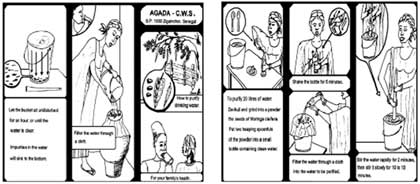
Document for making villagers aware of the use of the moringa olifeira in treating water
Source : ONG AGADA , Ziguinchor 
6) Special difficulties and precautions to be taken
Preparing the flocculent with Moringa oleifera is long and relatively complex for the scale of a family. This laborious method must be performed perfectly and can have a risk of bacterial contamination during the many steps that certain protocols call for, especially when storing the purified water in the household. The population must therefore be made perfectly aware of its adequate use.
7) Main advantages and drawbacks
Important : These depend greatly on the scale at which this technique is used
a) Treatment on the scale of a family
has the following advantages :
- it is inexpensive and can be applied in the most remote areas ;
- it allows traditional techniques to be maintained ;
- it is generally well understood and accepted by the villagers who can at the same time make use of the many other food and pharmacological advantages of this plant that grows easily.
but also a few disadvantages :
- success depends on the level of training of the population, which is indispensable.
- treating water requires a lot of time, which requires the involvement of many people.
- problems concerning dosage, stirring and poor maintenance of utensils are common ;
- The water can be contaminated by the utensils used to draw it or the storage containers.
- Purification is only partial and the treatment must be supplemented for increased safety.
b) Treatment at the scale of a small community
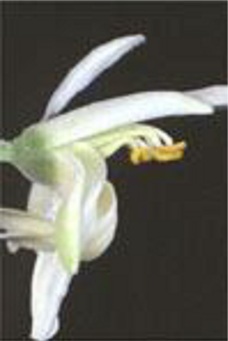
Moringa flower
This is interesting in the case of populations of over 1,000 people and then carried out in specific facilities,
Advantages
- It allows for economies of scale and increased facility in terms of treatment.
- it creates jobs and allows small community companies to be formed ;
- it allows for genuine control of the quality of the water and an improvement in sanitary conditions.
- it avoids the secondary effects linked, if they are not corrected, to the use in most of the large treatment plants of aluminium sulphate
- it is however possible to temporarily and on an exceptional basis replace the Moringa with alum in case of a lack of product.
However, such an operation involves :
- space for the trees, water for growing them, energy for pumping moringa flower
- possible economic and technical difficulties (bacteriological monitoring) if the facility was set up by a foreign organisation with no concern for follow-up after its departure.
- a price to be paid for the consumers (so a risk of going back to undrinkable water if there is a lack of money) ;
- possible problems concerning the qualifications of the personnel that maintain and clean the plant
c) Using Moringa industrially to treat drinking water
In theory, this method can be used for industrial-type plants. However, in light of the large quantities of product needed for the treatment, Moringa is more generally used here temporarily or as a supplement, substituting for the usual flocculants such as aluminium sulphate.
Advantages
- The cost of Moringa seed is, or can be, in some countries competitive compared to industrial flocculants. However, there is no feedback or economic studies available on this point.
- This is a product of tropical origin, and is interesting for the South countries as it is not subject to import taxes and does not require any foreign currencies ;
- Metal coagulants induce pollution that has to be controlled, the Moringa does not contain and harmful chemicals that leave traces in sludge and in the water ;
- The use of moringa oil makes it possible to make the purification and flocculation profitable
- The effectiveness of the Moringa as a flocculent does not depend on the pH of the water, which avoids having to use acidity correctors.
- Dosage errors do not induce any toxicity.
Disadvantages
- The seeds put into solution release organic matter, which facilitates bacterial growth ;
- The supply depends on farming production, and the need to form a stock in order to handle fluctuations. Optimal storage conditions must be determined.
- The concentrations in coagulants are higher than those required with aluminium sulphate ;
- Decantation at low temperatures is difficult,
8) Cost
Without counting investments such as a mill or a pump, the cost of producing one kilo of powder is estimated to be between €1 and €2. However, families that grow the Moringa can hope to have a profit of up to €1 per kilo.
A more precise idea of the costs per country is available on the Moringa news website :
http://www.moringanews.org/doc/FR/A...
9) Observations, recommendations and suggestions
If the water is of good bacteriological quality, this treatment can be enough (for example well water that is not contaminated but which has an unpleasant colour or taste, such as water with a high iron content), otherwise it is necessary to supplement the treatment with chlorine disinfection.
This technique can also be used with other coagulants such as alum in the event there is a lack of seeds.
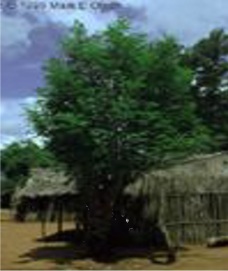 As with all coagulants, the effectiveness of the Moringa seeds can vary from one cloudy water to another. Tests must therefore be conducted in order to determine the effectiveness on a particular source of water and establish the optimal dosage according to the season. The practical application of dosage solutions is exactly the same as for all of the other coagulants, "jar-tests" must always be established in order to determine the specific dose required for the water to be treated. On the other hand, the quality of the water for the stock solution plays a role in the effectiveness of the treatment.
As with all coagulants, the effectiveness of the Moringa seeds can vary from one cloudy water to another. Tests must therefore be conducted in order to determine the effectiveness on a particular source of water and establish the optimal dosage according to the season. The practical application of dosage solutions is exactly the same as for all of the other coagulants, "jar-tests" must always be established in order to determine the specific dose required for the water to be treated. On the other hand, the quality of the water for the stock solution plays a role in the effectiveness of the treatment.
10) Achievement example
Here are the examples of use that have already been mentioned.
11) Where to obtain further information - Bibliography
a) Internet websites
- PROPAGE : Interesting 10-page document, with a bibliography, specifying the various techniques for using Moringa Olifeira according to the size of the treatment unit.
Available, online, on : www.moringanews.org/document...
- Moringa News : Same type of document but in more depth (8 pages) giving many example of use and their cost. Available, online, at :www.moringanews.org/doc/FR/A...
- Fondation Ensemble and Médecine de la nature : Illustrated 3-page data sheet "Moringa olifeira : The tree of life" explaining the nature and the virtues of the moringa olifeira
https://www.fondationensemble.org/wp-content/uploads/2014/10/FT_moringa.pdf
- Tropical Tree Network : publication of a dossier (see pages 11 to 14) "Treating water : is there a miracle solution with moringa olifeira ?" explaining the interest and also the limits of the method.
https://www.consoglobe.com/les-graines-de-moringa-pour-purifier-leau-cg
b) You Tube videos
- First 3’ Video “Purifying water with seeds from the moringa olifeira tree” showing how a villager purifies her water in this way. Video available on : http://www.youtube.com/watch?v=UKhC...
- Another 4’ video in English "Moringa oleifera miracle tree" showing the various uses of this plant as well as the vast fields where it is grown. Available, online, on : http://www.youtube.com/watch?v=rDna...
- Another 10’ very complete video in English with Spanish subtitles, "Documental sobre Moringa"
filmed in the Philippines, showing how it is grown and the various uses of it. Available, online, on :
http://www.youtube.com/watch?v=wBl9...
c) Bibliography
Faby J.A. and Eleli A., 1993 - Utilisation de la graine de Moringa, essais de floculation au laboratoire and en vraie grandeur. CIEH/EIER/Oieau, Série hydraulique urbaine and assainissement, 1993, 132 pp.
Foidl N., Makkar H.P.S. and Becker K., 2002. Potentiel du Moringa oleifera pour les besoins agricoles and industriels. In : Saint Sauveur, Appora, Besse and Fuglie, Potentiel de développement pour les produits du Moringa, Acts from the international workshop of Dar es Salaam, 29 October-2 November 2001, CIRAD/PROPAGE/SILVA, Montpellier, France (also available on www.moringanews.org and in L. Fuglie, 2002. "The tree of life", CWS/CTA, Dakar, Senegal)
Folkard G., 1997 - The development of the Moringa oleifera and stenopetala tree to provide valuable products : coagulant for water/wastewater treatment and vegetable oil. Report to the European Commission, DG 12, research project no. TS3*CT94-0309, period 1995-1997.



